The sleek and slim drains offer a clean and contemporary look.
Did you miss our previous article…
https://www.ab-sessions-plumbing-building-services.com/?p=250
Armstrong Self-Regulating Variable-Speed Fire Pump
The new fire pump holds the distinction of being the first self-regulating variable-speed fire pump to meet NFPA-20 (2019 Edition), Section 4.8 standards.
Did you miss our previous article…
https://www.ab-sessions-plumbing-building-services.com/?p=249
Allied LYNX 18 Inverter Heat Pump
The company has expanded its line of easy-to-install home heating and cooling solutions with the new LYNX 18 SEER Inverter Heat Pump under the Ducane, Concord, and Allied brands.
Did you miss our previous article…
https://www.ab-sessions-plumbing-building-services.com/?p=248
Southern California Pipe Trades District Council 16, Southwest Pipe Trades Association Pledge IWSH Support
The two organizations have become the latest IWSH Gold-level Global Partners.
Did you miss our previous article…
https://www.ab-sessions-plumbing-building-services.com/?p=247
Friendship Marketing: Quick Way to Business
We all see those posts on chat boards about, “My phone doesn’t ring, I’m desperate, what should I do?” Even those of you who have been in business for a few years have those dry spells don’t you? So, what do you do? You don’t throw a gazillion dollars into SEO marketing, get a new website or […]
The post Friendship Marketing: Quick Way to Business appeared first on Plumbing Perspective | News, Product Reviews, Videos, and Resources for today’s contractors..
Did you miss our previous article…
https://www.ab-sessions-plumbing-building-services.com/?p=246
Rinnai America Corporation Launches Innovative Rinnai PRO 360™ Advertising Packages
Creating opportunities for Rinnai PROs to maximize sales in their local market with an affordable and easy advertising solution Introducing a highly original and innovative advertising offering, Rinnai America Corporation launches the Rinnai PRO 360 Ad Packages. Developed for Rinnai PROs, the advertising package presents a simple, fast and affordable option to engage customers in a 90-day, multi-media campaign. With packages taking as […]
The post Rinnai America Corporation Launches Innovative Rinnai PRO 360™ Advertising Packages appeared first on Plumbing Perspective | News, Product Reviews, Videos, and Resources for today’s contractors..
Did you miss our previous article…
https://www.ab-sessions-plumbing-building-services.com/?p=248
How to Unclog a Bathroom Sink
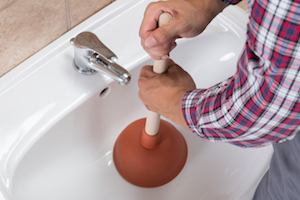
>
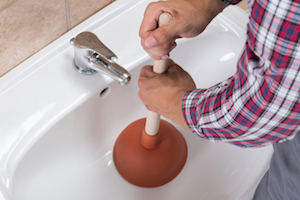
The best method to unclog a clogged bathroom sink may depend on what’s clogging it. You can flush soap scum clogs with vinegar and baking soda or tweeze hair. For bigger clogs, a plunger or drain snake work best. Figuring out why your drain is clogged is the best way to figure out how to unclog it.
Below are six methods that address how to unclog a sink drain. Most of these apply to kitchen sinks and showers drains too. Roll up your sleeves and get started. If your bathroom sink is completely clogged or your sink is full of water that won’t budge, your Los Angeles plumbing experts are on hand to help.
Why is my bathroom sink clogged?
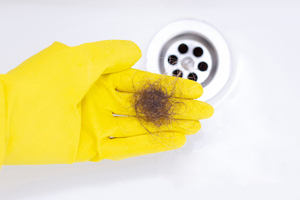
There are four common reasons why most people’s bathroom drains clog. Figuring out which one of these problems you have will give us a place to start. Look for:
Clumps of hair
When hair enters your sink drain it clumps together and gets stuck on the walls and tangled in the drain’s components.
Use a long tweezers or a zip-it tool to remove hair. If neither works, try disassembling the whole drain. (see “clean the p trap” below)
Soap scum
Soap scum is especially prevalent where there is hard water. It can build up in your pipes over time and foster mold and mildew.
Pour a pot of boiling water down the drain or use baking soda and vinegar to dislodge built up soap scum. If it still doesn’t budge, plunge with warm water.
Something stuck in p-trap
The p-trap is the curving pipe beneath your bathroom sink that connects to the wall pipe. It prevents harmful sewer gasses from coming up through the sink drain.
Disconnect your bathroom sink p-trap and clean out the hair and any large items that may have gotten stuck within (see details below).
Damaged pipes
Rust, corrosion, and other common pipe damage can lead to a slow drain or a clog over time.
Replace old, rusted pipes before they become bottled necked with debris. Plunge or snake them for temporary relief.
Unclogging your sink
After you’ve figured out why you have a clogged drain, try the method we recommended for your problem above. If you can’t figure out what your drain’s problem is, then try each of these methods in order.
Note: Never use chemical drain cleaners.
1. Baking soda and white vinegar
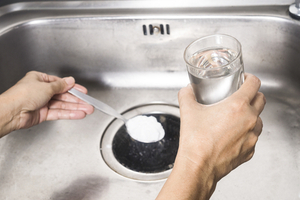
Unscrew the drain cover and remove the sink stopper.Measure out a ½ cup of baking soda and 1 cup of white vinegar.Sprinkle the ½ cup of baking soda into the drain.Pour the cup of vinegar down the drain.Let the mixture sit in the drain for several minutes, until fizzing stops.Rinse hot water into the drain.Repeat the process up to three times.
2. Remove bathroom hair clog
Remove the stopper.Use a flashlight to look down the drain.If you can see hair, use a long-nosed tweezers to retrieve it directly.If you can’t see hair, use a zip-it tool or bend and insert a wire hanger to retrieve it.Slide the tool up and down the drain as far as it will go naturally. Don’t attempt to force it.Push the tool in at different angles. Try to move it around the drain to catch more hair.Repeat the process several times, rinsing with hot water as necessary.
3. Plunge
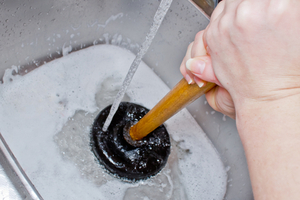
Use a cup plunger.Remove the stopper.Seal the sink overflow outlet with tape or a rag.Place towels or rags on the floor around the sink.Fill the sink with warm water.Use the plunger’s cup to create an airtight seal over the drain.Pump the plunger’s seal up and down several times with quick, sharp movements.Test the drain to see if you’ve cleared the clog.Repeat a few times as necessary.
4. Clean the p-trap
Put a bucket under your p-trap and wear rubber gloves.Loosen the slip nuts by hand or with a pliers as necessary.Remove the p-trap by hand and dump the water into the bucket.Remove objects and grime lodged in the trap.Clean the p-trap with a bristle brush.Put the p-trap back together and test the drain.
5. Snake

Use automated drain snakes (called plumber’s snakes or plumber’s augers) if possible.Place towels or rags beneath the sink.Remove the p-trap.Remove the stopper.Thread the snake into the wall drain manually.Uncoil the snake using the handle.When you reach the clog, rotate the head up-and-down and back-and-forth.Pull the snake out and reassemble the sink components.Check the drain.
6. Dissemble the drain
Follow these directions to remove your sink drain. Replace old or corroded drains with a new one. A new drain can help your sink smell fresh again.
Bathroom sink plumbing for Los Angeles’ worst clogs
We hope you’ve learned how to fix a clogged bathroom sink. If you’ve tried everything and are still up to your elbows in water, contact the pros at Mike Diamond. Some clogs are stubborn or so far down your line that they require extra finesse. We know how to dislodge these tough clogs and get your drain flowing again.
The post How to Unclog a Bathroom Sink appeared first on Mike Diamond Services.
Did you miss our previous article…
https://www.ab-sessions-plumbing-building-services.com/?p=218
How to Clean Mold in Showers
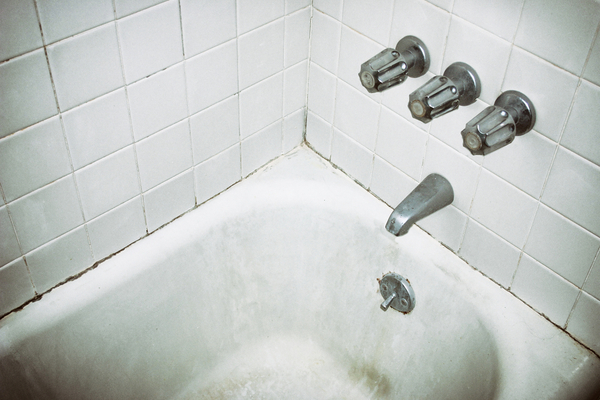
>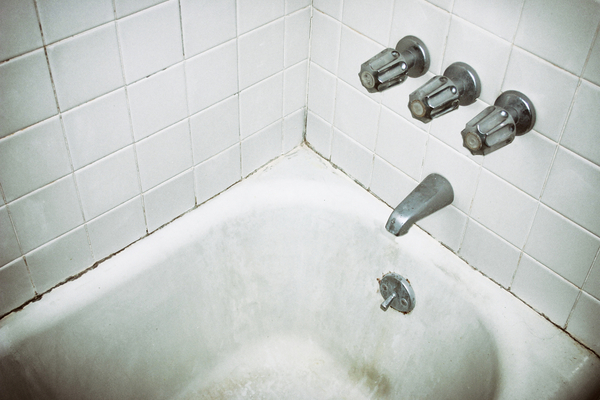
There are thousands of types of mold. Mold spores travel through the air around us every day. Once these spores settle, they can reproduce in 24-48 hours. All they need is a moisture and oxygen. Bathrooms and showers provide the perfect breeding ground for mold to grow.
Unlike mildew, which forms on surfaces, mold is a fungus that can penetrate porous materials. If you see black or green gunk in the corners of your tiles and caulking or dark spots along walls, you probably have mold.
Molds carry health risks, especially for people with acute illnesses and compromised immunity. We’ll show you how to clean mold in showers to avoid these health risks. We’ll also give to tips for preventing mold in your bathroom and your home.
What Kind of Mold is in Your Bathroom?
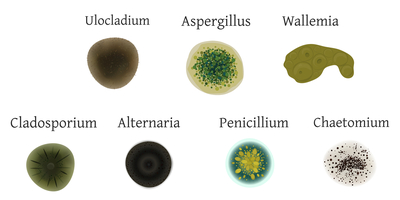
Molds come in three different classifications:
Allergenic: Causes an allergic reaction or asthma-like symptoms.Pathogenic: Harmful to people with acute illness or compromised immunity.Toxigenic: Dangerous or even deadly to everyone.
Unfortunately, it can be difficult to tell different kinds of mold apart. Black mold in showers could be Stachybotrys – the most toxic “black mold” – but it could be Alternaria or Aspergillus, two common household molds.
You can have your mold tested to determine what variety it is, but the CDC recommends treating all molds as harmful. It’s best to remove and clean any mold as quickly as possible.
8 Steps to a Mold-Free Shower
To fully get rid of black mold in your shower, orange mold in your shower and mold in shower grout, use a cleanser specifically designed for mold. While bleach is often touted as the best way to get rid of mold, it doesn’t fully address the problem. Bleach is good at removing mold stains and surface mold, but it doesn’t kill fungus that has soaked in.
If you prefer not to use a commercial detergent, you can create a 1:1 solution of hydrogen peroxide and water or white vinegar and water to kill deep-rooted mold.
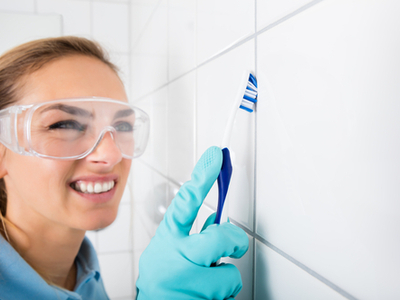
You will need:
CleanerSpray bottleRubber glovesCleaning clothScrub brush with stiff bristlesToilet paper or paper towelBleachVinegar
To perform a thorough cleaning, follow these steps:
Spray down all affected areas of shower with detergent or cleaning solution.Let soak for 20 minutes-hour.Apply rolled paper towel or TP in cracks and along tub rim to keep cleanser soaking against mold.Scrub vigorously with brush.Rinse and wipe with clean water.Scrub any stained areas with bleach.Rinse and wipe.Spray with white vinegar and let dry.
The final step is a preventative. White vinegar inhibits mold from growing and will reduce the chance of mold returning to your shower.
If you have significant mold growth or are worried that you have toxic mold, consult a professional remediator. Don’t take on large mold projects yourself.
Never paint or caulk over moldy walls/ cracks. You won’t stop the mold from reproducing or being a health risk. Replace old moldy caulk with new, mold-resistant caulking.
Remove Mold from Shower Head
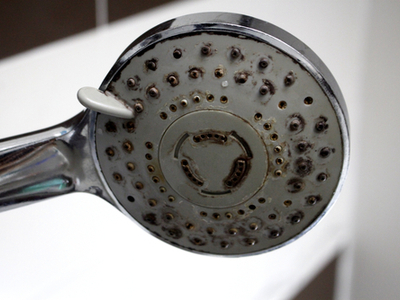
Shower heads inevitably build up with mineral deposits and sometimes mold. If you’re wondering how to clean all those small nozzle holes, here’s a trick.
Put a 1:1 solution of white vinegar and water in a plastic bag. Place the bag over your shower head and seal it shut with rubber bands. Let your shower soak in the solution overnight. The next morning your shower head will be like-new and, best of all, mold free.
How to Prevent mold in Showers and Bathrooms
The best way to get rid of mold is to prevent it from being able to form. Follow these practices to limit mold from growing in your shower.
Turn on an exhaust fan or open a window when showering.Keep humidifiers at 50% or less.Clean your bathroom often with mold-killing products.Fix leaks, drips and other sources of moisture.Change air filters frequently.Don’t leave wet towels or laundry on floor.Spray vinegar on shower walls regularly to prevent mold growth.
By keeping a dry, clean home, you significantly limit mold’s ability to grow. Regular bathroom cleaning and maintenance means no ugly dark stains on tile or grout.
Plumbing Issues Related to Bathroom Mold
If you have mold in your bathroom from leaky pipes, bad drains or drippy faucets, Mike Diamond can help. If you’re in Los Angeles or the surrounding area, schedule service with a certified plumber to evaluate and repair your plumbing issue today.
The post How to Clean Mold in Showers appeared first on Mike Diamond Services.
Did you miss our previous article…
https://www.ab-sessions-plumbing-building-services.com/?p=196
Water Damage Restoration
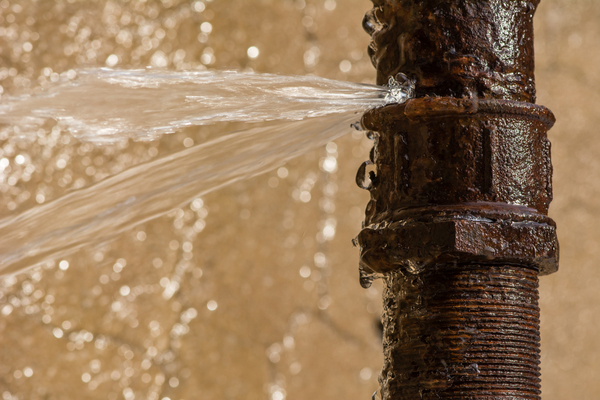
 Water damage refers to a large number of possible losses resulting from water penetrating an area in which it will allow entry of harmful microbial processes or even destructive structural processes, for an instance of rotting of wood, mildew growth, mold growth, corrosion of metal, swelling of certain composite woods, etc. Most cases are not severe but can lead to serious structural damages, costly overhauls, reconstruction, and rebuilding of the affected areas. This kind of damage is quite common in residential and commercial premises, and therefore proper steps must be taken to minimize and prevent it from happening. Prevention of Water Damage is essential, particularly in offices, commercial buildings, warehouses, workshops, and other places often exposed to high levels of water in the building.
Water damage refers to a large number of possible losses resulting from water penetrating an area in which it will allow entry of harmful microbial processes or even destructive structural processes, for an instance of rotting of wood, mildew growth, mold growth, corrosion of metal, swelling of certain composite woods, etc. Most cases are not severe but can lead to serious structural damages, costly overhauls, reconstruction, and rebuilding of the affected areas. This kind of damage is quite common in residential and commercial premises, and therefore proper steps must be taken to minimize and prevent it from happening. Prevention of Water Damage is essential, particularly in offices, commercial buildings, warehouses, workshops, and other places often exposed to high levels of water in the building.
The chances of water damage occurring are higher during winter seasons as it is more likely to accumulate dirt, moisture and rust in the building. A simple example of water damage is when a water main bursts, for instance, when water gushes over the roof or through broken pipes. The water that lands on the floor has the tendency to spread over carpet or any other porous surface within the vicinity, thus causing mould growth or other damage that cannot be easily removed. Thus, it is important to conduct regular maintenance and restoration process for water damage, especially if the damage is of a large scale.
There are two broad categories under which the different types of water damage fall: private and public. Public water damage occurs as a result of damage caused by floodwaters or similar natural events, whereas private water damage is a result of leakages that have occurred in the premises. In cases of private water damage, the damaged property could be permanent. It may also include damage caused due to theft, vandalism, stormwater run-off, and burst pipes. In some instances, public agencies and organizations like the local fire brigade or the local government can carry out water mitigation projects that reduce the impact on the affected property or area.
Public institutions like schools and universities can be major victims of water damage if they suffer from a major natural disaster. The main reason behind this is the failure of building sprinkler systems, which are meant to prevent accumulated water from reaching classrooms, laboratories, or other such facilities. Ongoing maintenance and replacement of faulty sprinkler systems can effectively reduce the risks of flood damage in such locations.
Private organizations and homeowners may also hire contractors to carry out the water mitigation and restoration process on their behalf. A general contractor specializing in water mitigation and restoration process can identify the areas most at risk in terms of flooding. Based on the required design, they can carry out a water mitigation project on the basis of the type of flood detected. This will help them assess the degree of threat posed by future water damage.
Once the assessment is done, they can start the restoration services. Water damage can cause major health risks if the affected area is not properly restored. A professional restoration service provider can carry out air purification process to get rid of any mold or mildew. They may also apply antimicrobial chemicals to prevent infection from occurring.
In addition, they can carry out mold removal, or mildew removal depending on the level of damage caused to the structure. They can also carry out disinfection of affected areas if the contaminated area shows signs of mold or mildew. For complete mold removal and restoration, the team should include a high-tech dehumidifier to eliminate the moisture levels in the damaged building. This will ensure that mold and mildew cannot grow in the damaged space.
After completing all the necessary repairs, a water damage restoration service provider can also help you in the process of eliminating the mold growth. In fact, they can even make the space livable for your family again. If a burst pipe or plumbing issue is responsible for the flooding, they can repair or replace the affected pipes. They can also make arrangements for increased water flow through the area to facilitate the drying up of the contaminated area. Once the space has been completely cleaned and dried, a sanitary drying unit can be used to maintain the cleanliness of the space.
Matthew Baranuk Joins Watts as Product Specialist for Backflow Preventers and Risers
In his new role, Baranuk will support strategy execution for Watts, Ames, and FEBCO brand Backflow Preventer and Riser products.
Did you miss our previous article…
https://www.ab-sessions-plumbing-building-services.com/?p=177
